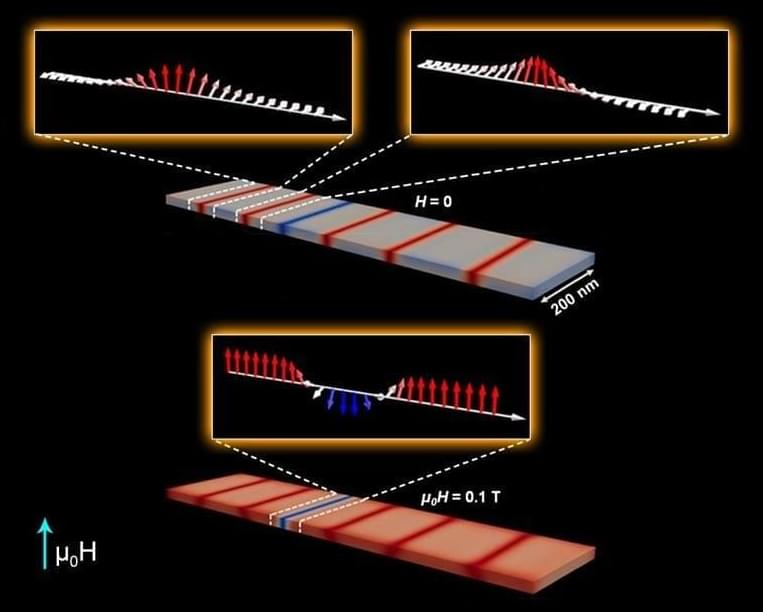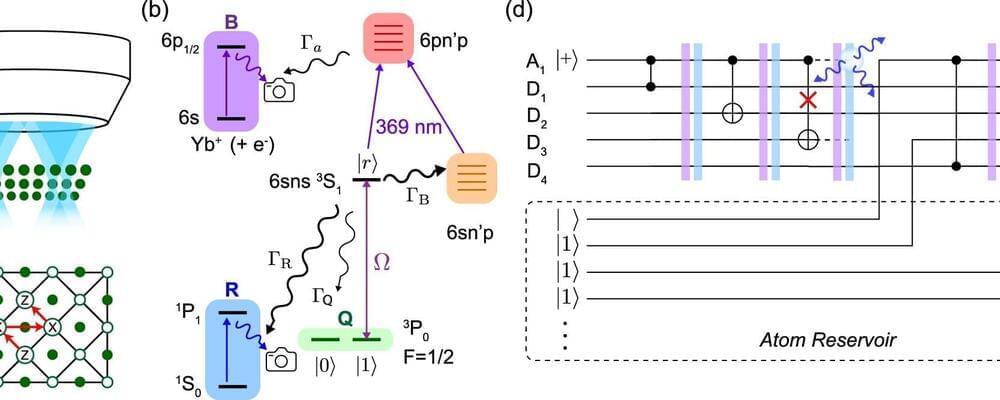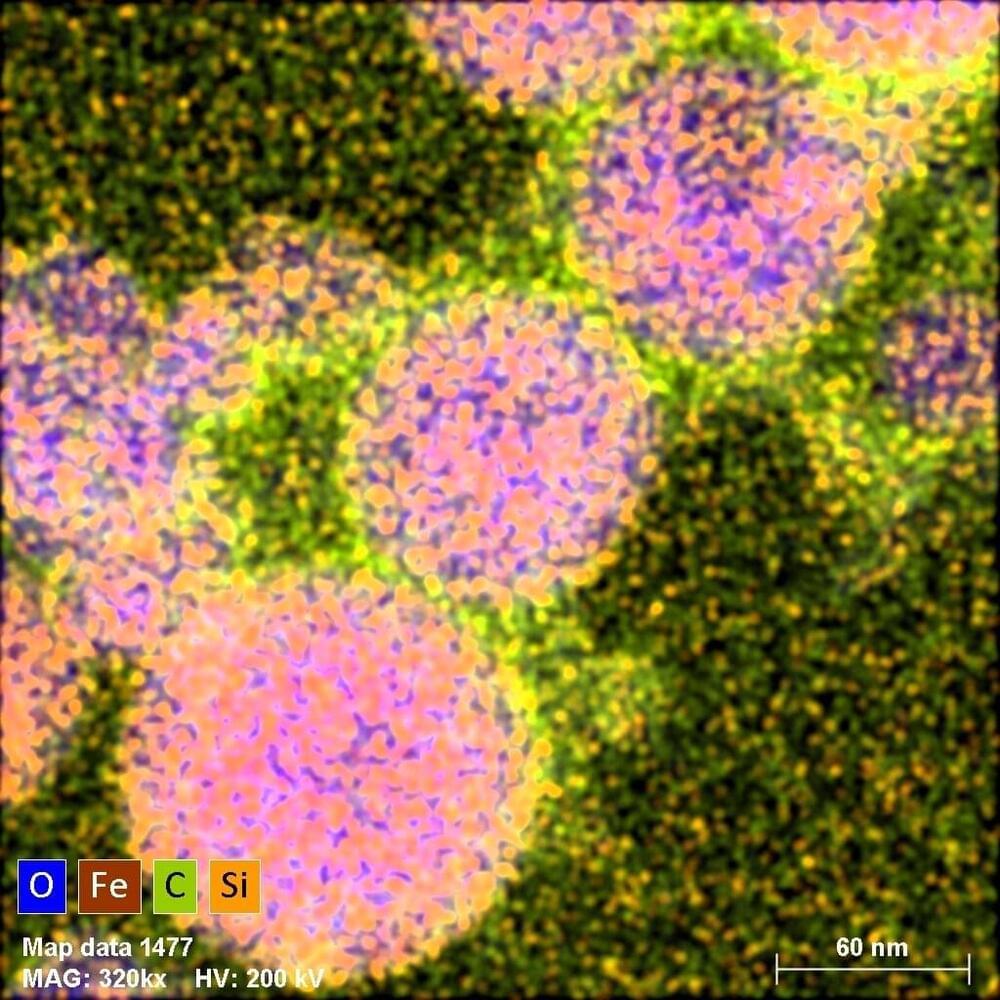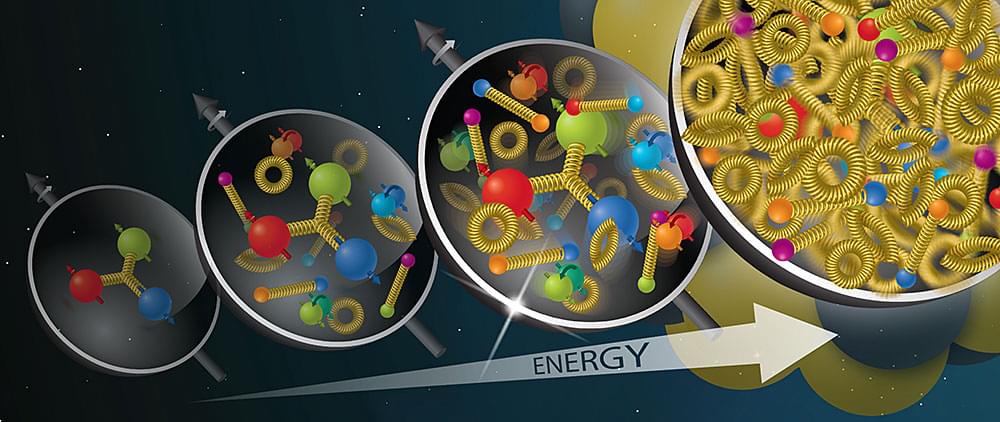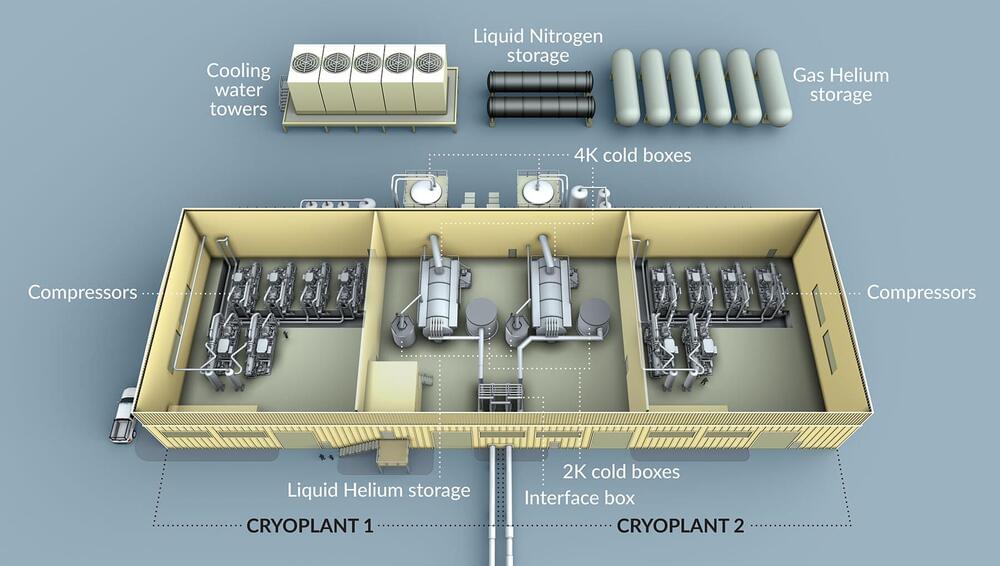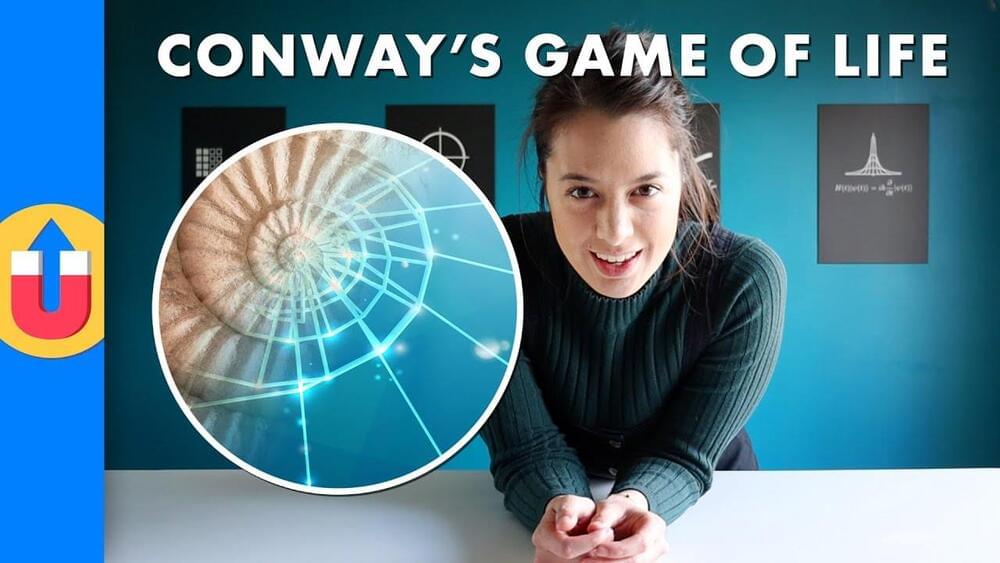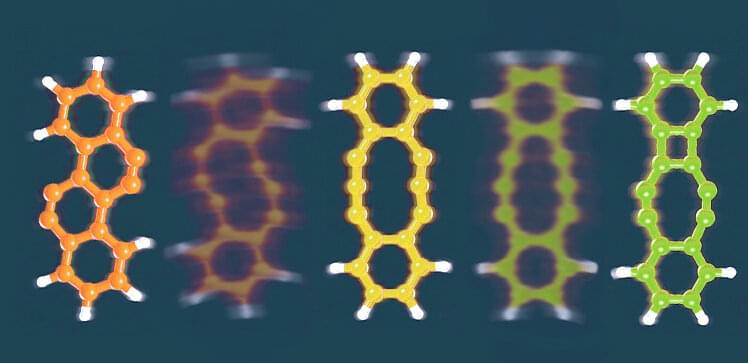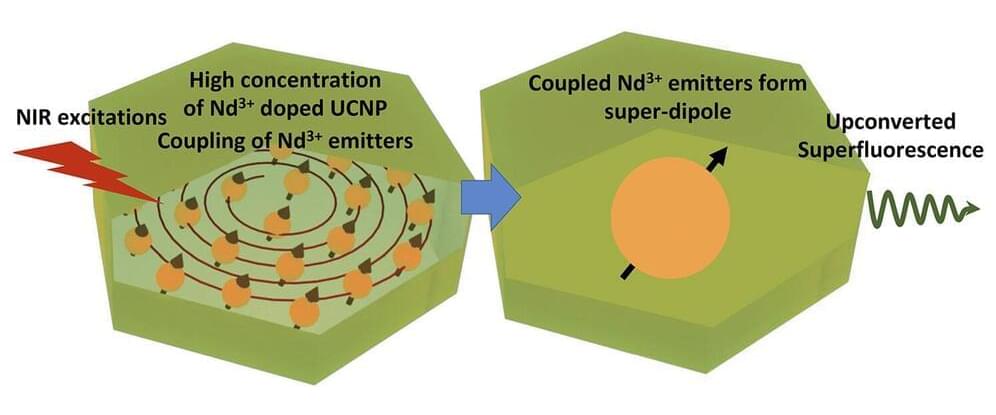Atoms in magnetic materials are organized into regions called magnetic domains. Within each domain, the electrons have the same magnetic orientation. This means their spins point in the same direction. “Walls” separate the magnetic domains. One type of wall has spin rotations that are left-or right-handed, known as having chirality. When subjected to a magnetic field, chiral domain walls approach one another, shrinking the magnetic domains.
Researchers have developed a magnetic material whose thickness determines whether chiral domain walls have the same or alternating handedness. In the latter case, applying a magnetic field leads to annihilation of colliding domain walls. The researchers combined neutron scattering and electron microscopy to characterize these internal, microscopic features, leading to better understanding of the magnetic behavior.
An emerging field of technology called spintronics involves processing and storing information by harnessing an electron’s spin instead of its charge. The ability to control this fundamental property could unlock new possibilities for developing electronic devices. Compared to current technology, these devices could store more information in less space and operate at higher speeds with less energy consumption.
